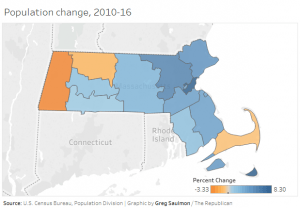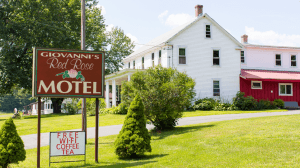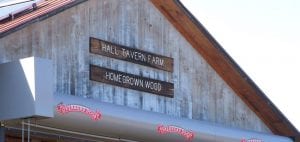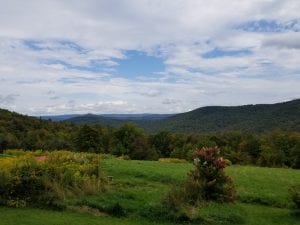Project Information
Background:
Rural areas suffer from the inability to grow and maintain economic stability. All around the world, being economically and socially sustainable challenges rural economies (Gabe, 2013). One such rural area that is struggling economically is Berkshire and Franklin Counties in Western Massachusetts. A very large problem that this region is facing is that it is suffering from population decrease (Mckeever, 2014).
This hurts local businesses in the region because smaller population creates a lack of people for businesses to employ. Tourism is a large part of the economies of Berkshire and Franklin Counties. In 2012, approximately 2.6 million people visited Berkshire and Franklin counties and spent $413 million. It created 3,507 jobs and total payroll of $96 million (Mohawk Trail Woodlands Partnership, 2016). However this has been threatened recently. In the past five years tourism has seen some big changes. Large numbers of travelers have lost interest in cookie cutter restaurants, lodging, and attractions (Steele, 2017). Lower numbers of tourist and people who are unaware of what the region has to offer are continuing to drive the region into more economic unsustainability. The Mohawk Trail Woodlands Partnership(MTWP) is a partnership with representatives from twenty one towns in Berkshire and Franklin counties that are investigating ways to improve the economy. The partnership has worked with the Massachusetts Office of Energy and Environmental Affairs(EEA) to propose seven programs to the region that pertain to technical assistance, marketing assistance, receiving grants and loans, and more. The partnership hopes to get the legislation passed so the partnership can receive funding from the state and federal government in order to institute the seven programs.
The Goal
The goal of our project was to evaluate the current seven programs established by the Mohawk Trail Woodlands Partnership that aim to revitalize wood and tourism related businesses in Berkshire and Franklin counties.
Objectives:
In order to accomplish the project goal the following three objectives were completed:
Objective #1: Determine the economic challenges that forest and tourism based businesses are facing as well as what they have been successful on and their opinions on the Mohawk Trail Woodlands Partnership’s seven proposed programs.
Five different businesses were interviewed, Zoar Outdoor, Hall Tavern Farms, Stump Sprouts, Red Rose Motel, and Kuklinski Woodworking. Each business was asked the same questions which included the history of the business, its current economic standing and future goal, and the seven proposed programs of the Mohawk Trail Woodlands Partnership. The information gained from these interviews was used to create a business profile for each business. These profiles are stories about the businesses interviewed. Each profile focuses on a specific challenge the the business has overcome.
Objective #2: Determine the depth of the differing types of wood and tourism businesses in the region.
An inventory of wood and tourism in the region was created to better range the depth of wood and tourism businesses in the region. The data for the businesses added to the inventory was collected by driving down the main roads of some of the partnership towns to see what wood and tourism businesses were present, web searches using Google, and using marketplaces such as Ebay, Etsy, and Craigslist.
Objective #3: Assess programs similar to the Mohawk Trail Woodlands Partnership’s business plan to see what are the factors and programmatic features, that have enabled them to be successful, and not so successful and how they could be beneficial in Berkshire and Franklin counties.
We determined organizations and programs that help supply small rural businesses with the money and training they need to be more economically sustainable. We examined programs that already exist such as the North East State Foresters Association (NEFA), and the Northern Forest Center (NFC). With the information gathered about these programs through research we were able to compare more specific details such as the size of the program compared to the area it benefits, the type of area the program works in, and also what exactly the program does for the businesses. We then compared these details to Berkshire and Franklin counties.








